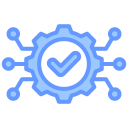
Choosing the Right Cross-Platform Framework for Your App
Chosen theme: Choosing the Right Cross-Platform Framework for Your App. Welcome to a practical, story-driven guide that helps you align technology with your product vision, team strengths, and timelines. We will explore trade-offs, share real lessons, and give you a clear decision path. If this resonates, subscribe for future deep dives and share your current framework shortlist so we can help refine it.
Defining the Decision: What Choosing the Right Cross-Platform Framework for Your App Really Means
A single codebase sounds magical, but expectations must match reality. Some frameworks prioritize pixel-perfect custom rendering, others embrace native widgets. Your target devices, accessibility needs, and offline behavior shape what trade-offs actually make sense for your app’s first year and beyond.

The Framework Landscape: Strengths, Trade-offs, and Fit
Flutter and React Native: Rendering Models Shape Your UX
Flutter renders via its own engine, giving consistent visuals across platforms and powerful custom UI, at the cost of larger binaries. React Native leans on native components and a JavaScript runtime, evolving with modern bridges like JSI and Fabric to reduce overhead. Your design system and performance goals guide the fit.
.NET MAUI and the C# Universe
.NET MAUI brings C#, mature tooling, and strong enterprise integrations to cross-platform development. If your team lives in Visual Studio, values shared business logic, and needs reliable Windows support alongside mobile, MAUI can align beautifully. Consider library availability and platform-specific nuances when estimating complexity and timelines.
Kotlin Multiplatform and Shared Logic, Native UI
Kotlin Multiplatform emphasizes sharing business logic while keeping fully native UI layers, preserving platform idioms. It can be ideal when you want the best of native feel without duplicating complex domain code. It demands experienced mobile engineers, but rewards you with flexibility, performance, and future-proof architecture.
Performance and Polish: From Cold Start to 60fps
Startup Time, Bundle Size, and Warm Paths
Cold start delays can cause early drop-off, especially on mid-range devices. Frameworks with hefty engines may increase binary size, while bridge-based approaches can add initialization overhead. Profile startup phases, strip unused assets, and defer non-critical work. Choose a framework whose initialization model aligns with your user patience threshold.
Smooth Animations and Gesture Responsiveness
Your app’s perceived quality hinges on touch latency and animation consistency. Canvas-driven frameworks often excel at custom, complex motion, while native components can deliver platform-consistent interactions. Prototype scrolling lists, complex transitions, and gesture-heavy screens to uncover bottlenecks early. Ask us for a test script to benchmark your flows.
A Real-World Benchmark Snapshot
On a mid-range Android device, we observed a 20 to 40 percent variance in cold start time across frameworks and notable differences in list rendering stress tests. While results are highly app-specific, structured measurement beats opinion. Share your device targets, and we will propose a lean benchmarking plan.
Accessing Native Capabilities and Tooling That Matter
Plugins, Bridges, and When to Go Native
Review plugin quality, maintenance cadence, and platform parity. A weak plugin can cost more than writing a thin native module. Define a clear boundary: what stays cross-platform and what is best implemented natively. This clarity avoids accidental complexity and keeps your architecture pragmatic under real deadlines.


Developer Experience: Hot Reload, Profilers, CI/CD
Developer velocity compounds. Hot reload, integrated profilers, and reliable emulators reduce friction. Your CI pipeline should reliably build, test, sign, and distribute across platforms. Prefer frameworks with strong documentation and active tooling communities. Tell us your current toolchain, and we will suggest a minimal, scalable stack.
Teams, Hiring, and Long-Term Maintainability
If your team excels in JavaScript and TypeScript, React Native can accelerate onboarding and hiring. Dart enthusiasts may thrive with Flutter’s cohesive ecosystem. C# shops might benefit from MAUI’s familiarity. Skills alignment boosts morale, reduces mistakes, and keeps the roadmap realistic when deadlines tighten unexpectedly.

Your Decision Playbook: A Lightweight, Repeatable Process
Build a 7-Day Proof of Concept with Must-Have Features
Implement onboarding, one critical form, and a list with images and interactions on both platforms. Measure startup, smoothness, and build times. Keep scope tight. Your goal is not perfection but a realistic signal about feasibility, velocity, and the developer experience you will live with every day.
Scorecards, Risks, and a Plan B
Create a simple scorecard for performance, plugin maturity, developer happiness, and maintenance cost. Surface risks like niche dependencies or vendor lock-in. Define an exit strategy before you commit. A clear Plan B reduces fear and empowers your team to choose boldly and course-correct quickly if needed.
Community Signals and Vendor Stability
Evaluate release cadence, documentation quality, issue response times, and real-world case studies. Strong communities lower long-term risk and foster learning. Favor ecosystems where your questions get answers fast. Share your finalists, and we will point you to credible community resources to validate your decision.
